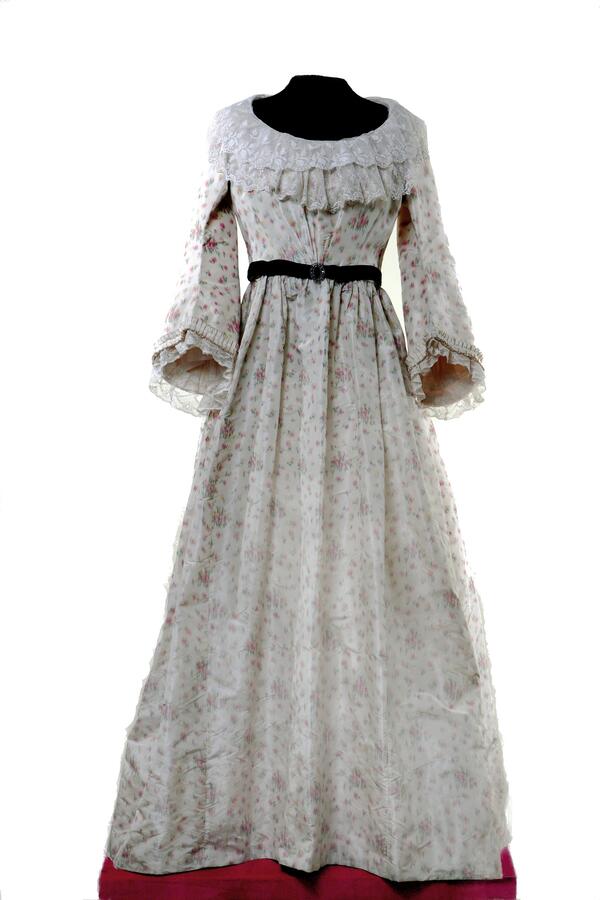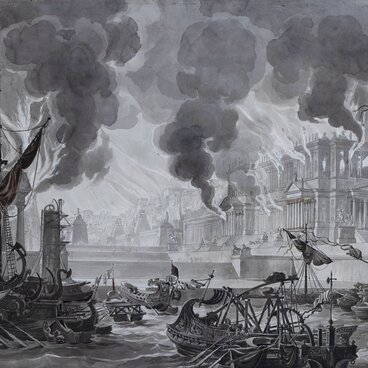The actress Maria Savina (1854–1915) worked in the Alexandrinsky Theater in Saint Petersburg for over 40 years. She was dubbed as the Saint Petersburg Sarah Bernhardt for her outstanding acting skills. The theater critic Alexander Kugel once noted that she had achieved such success through great effort and overcoming difficulties on stage. Savina had never had any training at a drama school, she performed in the province for a few years and later moved to Saint Petersburg. Through years of hard work and her love for theater, “Savina conquered the life and won things from it, though they never came easily.”
The 25-year-old Savina chose “A Month in the Country” by Ivan Sergeyevich Turgenev as her benefit performance in 1879. The play was considered untheatrical — it was only staged once in all the thirty years of its existence. The actress was interested in taking up the role of Verochka, so she portrayed her as a charming young woman taken in by a rich lady out of charity.
Upon seeing Savina play the poor ward from his play, Turgenev became ecstatic. “You are indeed Verochka. Could this be the Verochka I created?” he exclaimed. Ivan Turgenev gave the actress a golden bracelet and a photograph with an inscription expressing gratitude for the success of the play that Savina had saved from falling into oblivion. Some years had passed, and Savina decided to revisit the play “A Month in the Country.” This time, she was going to play the rich landlady Natalya Petrovna, Verochka’s patroness. Savina’s character was struggling emotionally, and her entire being seemed interwoven with anguish and fatigue.
The role of Natalya Petrovna was considered Maria Savina’s best one. The actress’s portrayal of the late-blooming love of her character was reserved and true to Turgenev’s poeticism. Savina combined her complex and intricate acting with psychological insights.The museum houses Savina’s costume for the role of Natalya Petrovna. Maria Savina was one of the most elegantly dressed women in Saint Petersburg. Her stage costumes were often sketched by rich fashionistas during her performances. They would later use the sketches tfor the design of their own clothes. The costume from the museum was custom-made in one of the Parisian ateliers.
The 25-year-old Savina chose “A Month in the Country” by Ivan Sergeyevich Turgenev as her benefit performance in 1879. The play was considered untheatrical — it was only staged once in all the thirty years of its existence. The actress was interested in taking up the role of Verochka, so she portrayed her as a charming young woman taken in by a rich lady out of charity.
Upon seeing Savina play the poor ward from his play, Turgenev became ecstatic. “You are indeed Verochka. Could this be the Verochka I created?” he exclaimed. Ivan Turgenev gave the actress a golden bracelet and a photograph with an inscription expressing gratitude for the success of the play that Savina had saved from falling into oblivion. Some years had passed, and Savina decided to revisit the play “A Month in the Country.” This time, she was going to play the rich landlady Natalya Petrovna, Verochka’s patroness. Savina’s character was struggling emotionally, and her entire being seemed interwoven with anguish and fatigue.
The role of Natalya Petrovna was considered Maria Savina’s best one. The actress’s portrayal of the late-blooming love of her character was reserved and true to Turgenev’s poeticism. Savina combined her complex and intricate acting with psychological insights.The museum houses Savina’s costume for the role of Natalya Petrovna. Maria Savina was one of the most elegantly dressed women in Saint Petersburg. Her stage costumes were often sketched by rich fashionistas during her performances. They would later use the sketches tfor the design of their own clothes. The costume from the museum was custom-made in one of the Parisian ateliers.








